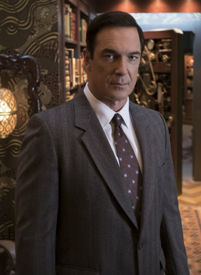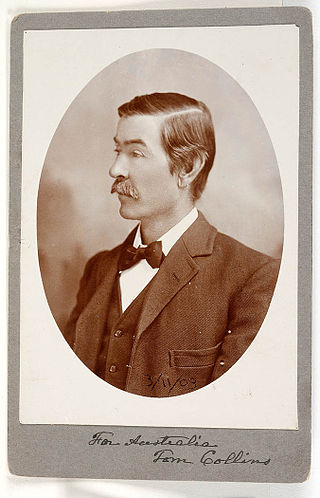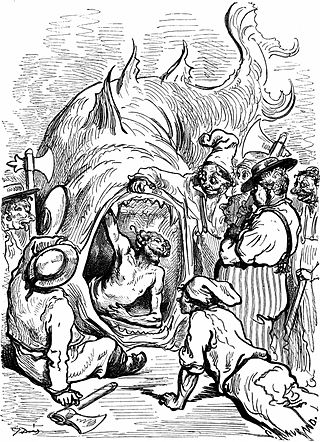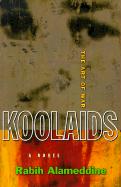Related Research Articles
A first-person narrative is a mode of storytelling in which a storyteller recounts events from their own point of view using the first person such as "I", "us", "our" and "ourselves". It may be narrated by a first-person protagonist, first-person re-teller, first-person witness, or first-person peripheral. A classic example of a first-person protagonist narrator is Charlotte Brontë's Jane Eyre (1847), in which the title character is also the narrator telling her own story, "I could not unlove him now, merely because I found that he had ceased to notice me".

Lemony Snicket is the pen name of American author Daniel Handler. Handler has published several children's books under the name, most notably A Series of Unfortunate Events, which has sold over 60 million copies and spawned a 2004 film and TV series from 2017 to 2019. Lemony Snicket also serves as both the fictional narrator and a character in A Series of Unfortunate Events, as well as the main character in its prequel, a four-part book series titled All the Wrong Questions.

A story within a story, also referred to as an embedded narrative, is a literary device in which a character within a story becomes the narrator of a second story. Multiple layers of stories within stories are sometimes called nested stories. A play may have a brief play within it, such as Shakespeare's play Hamlet; a film may show the characters watching a short film; or a novel may contain a short story within the novel. A story within a story can be used in all types of narration: novels, short stories, plays, television programs, films, poems, songs, video games, and philosophical essays.

The Remains of the Day is a 1989 novel by the Nobel Prize-winning British author Kazuo Ishiguro. The protagonist, Stevens, is a butler with a long record of service at Darlington Hall, a stately home near Oxford, England. In 1956, he takes a road trip to visit a former colleague, and reminisces about events at Darlington Hall in the 1920s and 1930s.

Joseph Furphy was an Australian author and poet who is widely regarded as the "Father of the Australian novel". He mostly wrote under the pseudonym Tom Collins and is best known for his novel Such Is Life (1903), regarded as an Australian classic.

Breakfast of Champions, or Goodbye Blue Monday is a 1973 novel by the American author Kurt Vonnegut. His seventh novel, it is set predominantly in the fictional town of Midland City, Ohio, and focuses on two characters: Dwayne Hoover, a Midland resident, Pontiac dealer and affluent figure in the city, and Kilgore Trout, a widely published but mostly unknown science fiction author. Breakfast of Champions deals with themes of free will, suicide, and race relations, among others. The novel is full of drawings by the author, substituting descriptive language with depictions requiring no translation.
Diegesis is a style of fiction storytelling which presents an interior view of a world in which the narrator presents the actions of the characters to the readers or audience.

An unreliable narrator is a narrator whose credibility is compromised. They can be found in fiction and film, and range from children to mature characters. The term was coined in 1961 by Wayne C. Booth in The Rhetoric of Fiction. While unreliable narrators are almost by definition first-person narrators, arguments have been made for the existence of unreliable second- and third-person narrators, especially within the context of film and television, and sometimes also in literature.
In literature and writing, stylistically elements are the use of any of a variety of techniques to give an auxiliary meaning, ideas, or feeling to the literalism or written.
Narration is the use of a written or spoken commentary to convey a story to an audience. Narration is conveyed by a narrator: a specific person, or unspecified literary voice, developed by the creator of the story to deliver information to the audience, particularly about the plot: the series of events. Narration is a required element of all written stories, presenting the story in its entirety. However, narration is merely optional in most other storytelling formats, such as films, plays, television shows, and video games, in which the story can be conveyed through other means, like dialogue between characters or visual action.
The Aubrey–Maturin series is a sequence of nautical historical novels—20 completed and one unfinished—by English author Patrick O'Brian, set during the Napoleonic Wars and centring on the friendship between Captain Jack Aubrey of the Royal Navy and his ship's surgeon Stephen Maturin, a physician, natural philosopher, and intelligence agent. The first novel, Master and Commander, was published in 1969 and the last finished novel in 1999. The 21st novel of the series, left unfinished at O'Brian's death in 2000, appeared in print in late 2004. The series received considerable international acclaim, and most of the novels reached The New York Times Best Seller list. These novels comprise the heart of the canon of an author often compared to Jane Austen, C. S. Forester and other British authors central to English literature.

Haunted is a 2005 novel by Chuck Palahniuk. The plot is a frame story for a series of 23 short stories, most preceded by a free verse poem. Each story is followed by a chapter of the main narrative, is told by a character in main narrative, and ties back into the main story in some way. Typical of Palahniuk's work, the dominant motifs in Haunted are sexual deviance, sexual identity, desperation, social distastefulness, disease, murder, death, and existentialism.
Fiction writing is the composition of non-factual prose texts. Fictional writing often is produced as a story meant to entertain or convey an author's point of view. The result of this may be a short story, novel, novella, screenplay, or drama, which are all types of fictional writing styles. Different types of authors practice fictional writing, including novelists, playwrights, short story writers, radio dramatists and screenwriters.

Thank You, Jeeves is a Jeeves comic novel by P.G. Wodehouse, first published in the United Kingdom on 16 March 1934 by Herbert Jenkins, London, and in the United States on 23 April 1934 by Little, Brown and Company, New York.

An Artist of the Floating World (1986) is a novel by British author Kazuo Ishiguro. It is set in post-World War II Japan and is narrated by Masuji Ono, an ageing painter, who looks back on his life and how he has lived it. He notices how his once-great reputation has faltered since the war and how attitudes towards him and his paintings have changed. The chief conflict deals with Ono's need to accept responsibility for his past actions, rendered politically suspect in the context of post-War Japan. The novel ends with the narrator expressing good will for the young white-collar workers on the streets at lunchbreak. The novel also deals with the role of people in a rapidly changing political environment and with the assumption and denial of guilt.

The Brief Wondrous Life of Oscar Wao is a 2007 novel written by Dominican American author Junot Díaz. Although a work of fiction, the novel is set in New Jersey in the United States, where Díaz was raised, and it deals with the Dominican Republic's experience under dictator Rafael Trujillo. The book chronicles the life of Oscar de León, an overweight Dominican boy growing up in Paterson, New Jersey, who is obsessed with science fiction and fantasy novels and with falling in love, as well as a curse that has plagued his family for generations.

Koolaids: The Art of War is a novel by Rabih Alameddine, an author and painter who lives in both San Francisco and Beirut. He grew up in the Middle East, in Kuwait and Lebanon. Published in 1998, Koolaids is Alameddine's first novel. The majority of the story takes place in San Francisco and Beirut, the sites of two very different "wars". San Francisco from the mid-1980s into the 1990s is the main site of the AIDS epidemic, especially among the gay community, while Beirut is the site of a brutal civil war.

Rigby's Romance (1905) is a novel by Australian author Joseph Furphy, written under his pseudonym "Tom Collins". The book was originally serialised in The Barrier Truth from 27 October 1905 to 20 July 1906. It was not released in book form until 1921 when the C. J. DeGaris Publishing House published its full-length edition.

I'm Thinking of Ending Things is the 2016 debut novel of Canadian writer Iain Reid. It was first published in June 2016 in the United States by Simon & Schuster. The book has been described as a psychological thriller and horror fiction, and is about a young woman who has many doubts about her relationship with her boyfriend but nevertheless takes a road trip with him to meet his parents.

Catherine Baker (1861–1953) was an Irish-born Australian teacher, best known for encouraging and championing her friend Joseph Furphy, who wrote the quintessential Australian novel of its period, Such Is Life. Despite an indifferent reception by the general public upon its initial publication in 1909, when it was written under the pen name Tom Collins, after Furphy's death Baker championed his work and had much of it rescued and republished. Miles Franklin incorporated Baker's recollections into the essay "Who Was Joseph Furphy?", which won the S. H. Prior Memorial Prize in 1939. Baker was appointed an OBE in 1937 for her efforts in promoting Furphy's work and to broader Australian literature. She was an influential part of the Australian literary scene, supporting, writing to and encouraging writers such as Ada Cambridge, Victor Kennedy, Edith Coleman, the poet Marie E. J. Pitt, journalist Alice Henry and the poet John Shaw Neilson. She was made a life member of the Henry Lawson Society, and honored with a bronze plaque by the society in 1936. Shortly before her death in 1953 she was made vice-president of the Australian Council for Civil Liberties.
References
- ↑ "Celebrating the original larrikin". The Age . 26 July 2003. Retrieved 7 July 2008.
- ↑ For example, Such Is Life contains possibly the first written incidence of the Australian and New Zealand idiom "ropeable". Chapter One contains the following phrase: "On't ole Martin be ropeable when he sees that fence!"
- ↑ Serle, Geoffrey (1973). From Deserts the Prophets come; the creative spirit in Australia 1788-1972. Melbourne: Heinemann. p. 66. ISBN 0855610298.